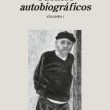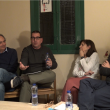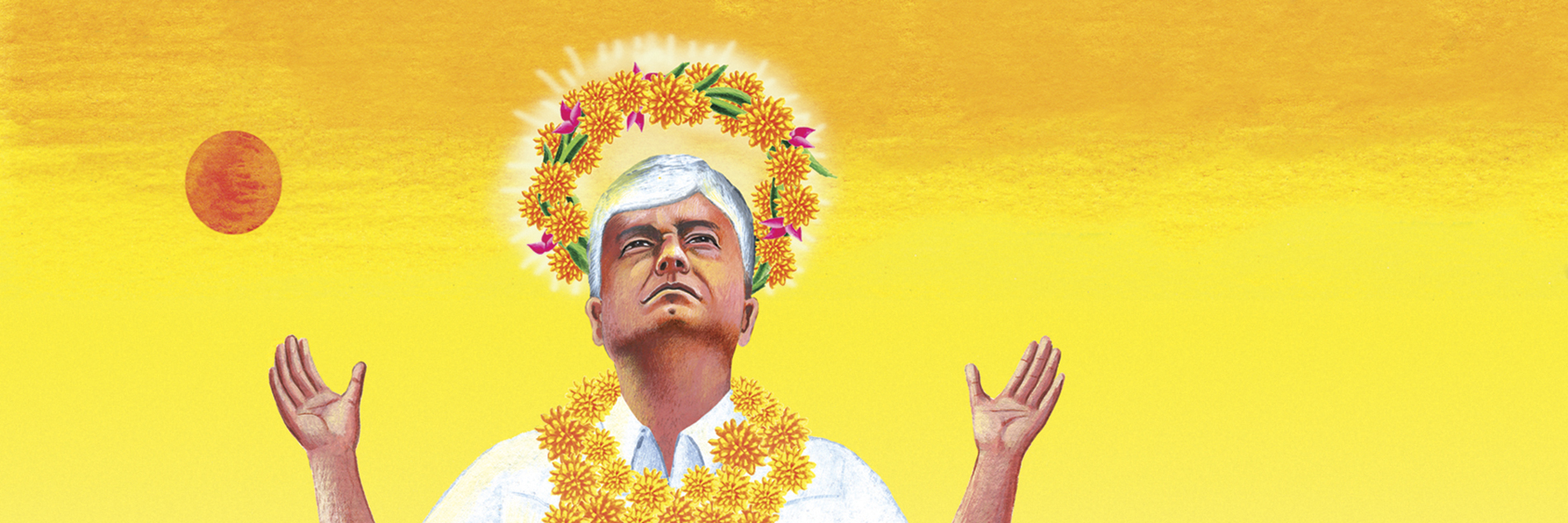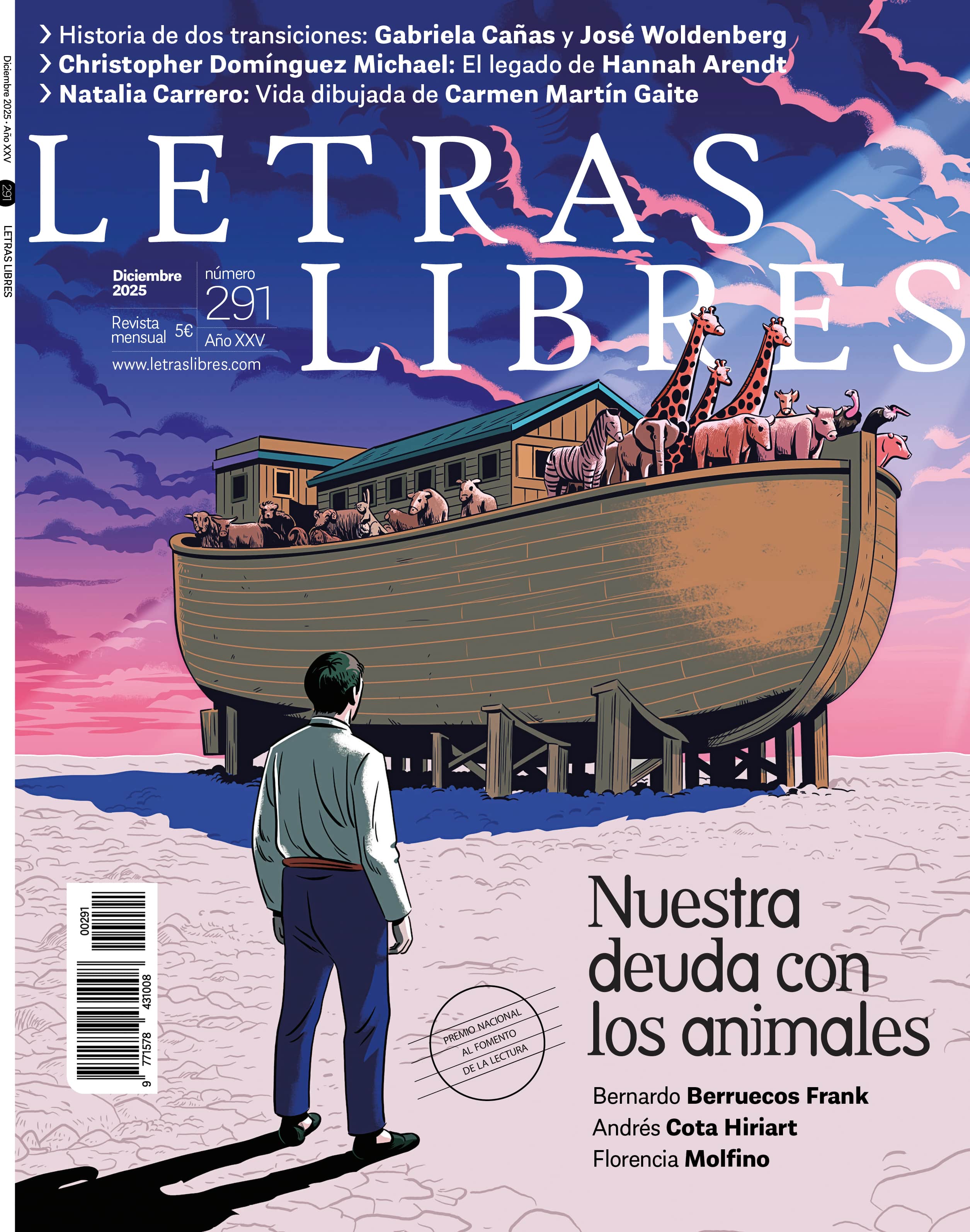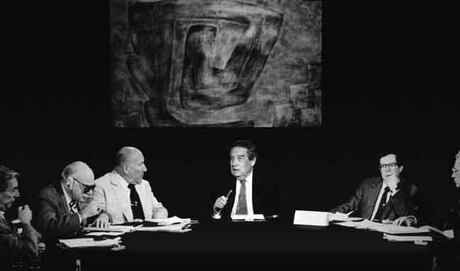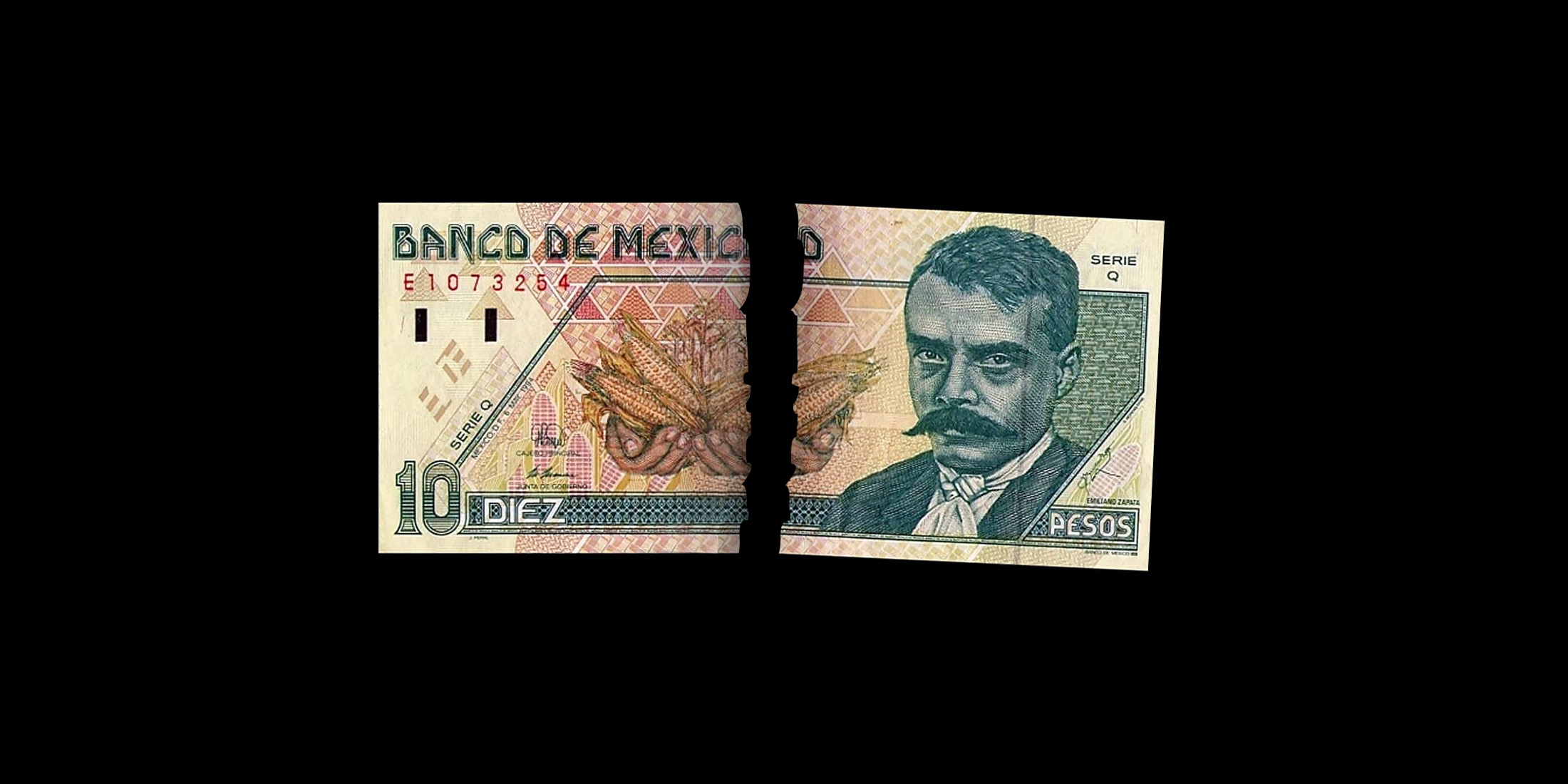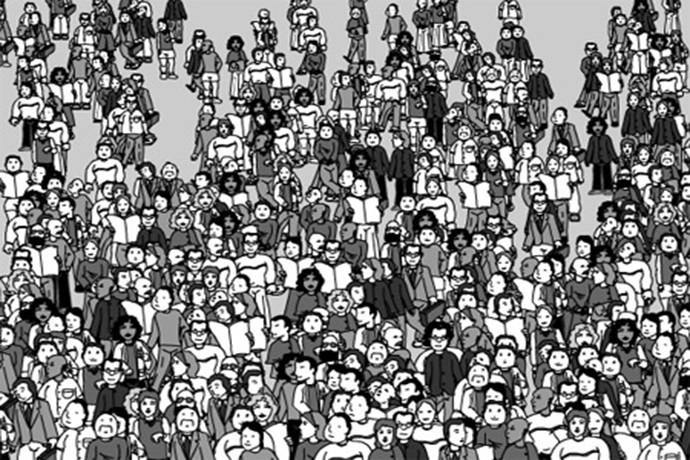At dawn one morning in the summer of 2003, I met Andrés Manuel López Obrador, the controversial chief of government of the Federal District of Mexico (DF), better known as Mexico City. Perhaps a more appropriate title for him would be mayor, but that modest description does not seem sufficient. He now represents a lot more than that. There is a strong possibility that, in the July elections, he will become the next president of Mexico.
The time of our talk was chosen by my host. López Obrador rises as early as a rooster, the cocky symbol to which he likens himself. He is as elusive as the pejelegarto, the feisty fish from which he derives his nickname, el Peje, which is found in the waters of Tabasco, his oil-rich native state in southeast Mexico. López Obrador used to call ingenious daily press conferences at 6 a.m. to provide updates about his proceedings and to dodge compromising questions.
City Hall, where López Obrador keeps his office in a small annex, is situated in the ancient pre-Hispanic space known as the Zócalo. It is in front of the Cathedral (the seat of spiritual power), where for almost five centuries, conquerors, viceroys, kings, caudillos, and presidents ruled the country. López Obrador understands the historic power of the place. President Vicente Fox, by contrast, performed his duties in the ritzy official presidential residence of Los Pinos and came to the Zócalo only once in a while.
A straightforward man with a malicious grin plastered on his face, AMLO–as he is known by the acronym formed by his initials–began to speak to me about Mexican history. In the 1980s López Obrador wrote two books about the state of Tabasco in the nineteenth century. “They are based heavily on the work of Don Daniel,” he admitted, referring to Don Daniel Cosío Villegas, the greatest liberal historian of the Mexican twentieth century. This reminded me of something that Cosío once said to me about General Lázaro Cárdenas, Mexico’s most revered president: “I always admired him for his popular instincts.” I told López Obrador that I observed the same quality in him and that it could lead him to the presidency. “The people don’t make mistakes,” he replied.
I asked him if it was true that he did not own a passport. “It’s strange,” he replied, “that people hold that against me. President Venustiano Carranza never crossed the border.” I noted that Carranza was president between 1917 and 1920, but he was unmoved. “You have to concentrate on Mexico,” he said, “For me, the best foreign policy is good domestic policy.” It was obvious that the rest of the world did not interest him. His world was Mexico. And the world within this world was Tabasco.
Born on November 13, 1953, in the small town of Tepetitán, he came from an enterprising, low-class family involved in various types of commercial activity. By most accounts, López Obrador was a fighter from an early age. According to his more obsequious biographies, he was called “the rock,” because he hit hard: “He used to fight someone, beat them, and wind up with that teasing little ‘I-beat-you’ smile,” says one. He was very good at baseball, although, according to another, “when his team lost, he would get furious.” According to some reports, he once threw a ball at a fellow player’s head in anger, causing permanent damage.
The López Obradors spread themselves out all over the small town of Tepetitán. “We didn’t have borders,” one of his brothers remembers. “We had the whole town; all of it was ours.” In the 1960s, the family moved to the state capital, Villahermosa. López Obrador was deeply attached to his home state. He spent around three years studying political science at the National Autonomous University in Mexico City in the 1970s, but, even there, he lived in a dorm for Tabascan students.
To liven up the conversation with López Obrador, you can talk about baseball or you can talk about Tabasco. I wanted to talk about Tabasco—the cradle of Olmec culture (the mother of all cultures of Mesoamerica) and the gateway for the conquest (Cortés landed there in 1519). Tabascan history is López Obrador’s passion. He referred fondly and admiringly to Tomás Garrido Canabal and Carlos Madrazo, two strongmen governors of the state in the twentieth century. I said that Tabasco had never produced a Mexican president. He immediately replied that, “for all Tabascans, it is very difficult to get used to the culture of the highlands” (referring to the central, high-altitude areas of the country and particularly Mexico City). “It’s a different culture. And, for me, it has been difficult as well. It has taken a lot for me to adapt.” Then he read a paragraph from one of his books about his state:
In Tabasco, nature has a relevant role in the exercise of public power. In harmony with our environment, we Tabascans do now know how to play coy. Here, everything becomes overgrown and jumps out of its tracks. In this portion of the national territory, the most tropical of Mexico, rivers overflow, the sky is prone to storms, different shades of green battle each other, and spring’s heat or the burning dog days of summer ignite passions and make raw frankness boil over.
He closed the book and said, “This is where my theory about ‘tropical power’ comes from. The Tabascan should control his passions.”
The key to a better understanding of López Obrador’s politics—and of the danger they represent—does not lie in Mexico City. It is to be found, as he himself led me to conjecture during our breakfast, in the history of Tabasco, the land of “tropical power.”
“An isolated swampy puritanical state.” That is how Graham Greene, in The Lawless Roads, described Tabasco. Greene traveled throughout Tabasco in 1938, four years after Garrido’s era–which stretched from 1919 to 1934–had ended. Greene was intrigued by the “obscure personal neurosis,” of the “incorruptible dictator,” whose shadow continued to lurk. Greene remarked upon the place’s “rationalist schools,” almost military-like institutions of discipline where children were indoctrinated “scientifically” and learned the virtues of reason, agricultural technique, and physical exercises. He was struck by the posters that he saw in the schools: a woman crucified while a monk kissed her feet, a drunken priest sipping wine during the Eucharist. His confessor in Orizaba had warned him that this was “a very evil land,” and Greene saw evidence of this everywhere: “There has always been hate, I suppose, in Mexico but now it is the official teaching: It has superseded love in school curriculum… One cannot believe it will be succeeded by anything at all: it poisons the human wells.”
In Tabasco in 1938, one could also find the presence of a puritanical rigor—the lights went out at 9:30 p.m., alcohol was prohibited—and the vestiges of a regimented society: Cooperatives of agricultural distribution were controlled by the government, and there were obligatory “leagues of resistance” for each group of workers. What stood out more than anything else were the Camisas Rojas–“Red Shirts”–student contingents of both sexes, perfectly uniformed in black and red, who marched through the streets with fascist discipline, serving as shock troops of indoctrination for the intense campaign against “God and religion.” In scenes filmed by Garrido’s government for propagandistic ends, Camisas Rojas clenched pickaxes so that they could destroy, piece by piece, Villahermosa’s cathedral; they tossed into the flames pious images taken from destroyed churches or objects of personal devotion that people had kept in their homes; they staged tumultuous autos da fe in which children and teachers, young and old took turns with an ax, destroying great sculptures of the crucified Christ.
In his book Between History and Hope, published in 1995, López Obrador expresses his admiration for Garrido. Tabasco under Garrido “became the political Mecca of the country,” he declares. The religious metaphor is not accidental. Tabasco, in fact, grew and matured in isolation over the centuries, left untouched by the hand of God: In Tabasco, there had been few of the missionaries who evangelized the majority of the country. The place was almost without churches or parishes (the diocese was not founded until 1880), and it had a tiny number of clergymen compared with the rest of the country. Not even educational institutions–colleges or seminaries, which were common in the rest of Mexico–took root in the place. (The Juárez Institute, the only institution of higher education, was not founded until 1879.) So Tabasco resented its cultural isolation as much as its geographical isolation and waited for its opportunity to affirm itself in national history–to become the nation’s Mecca.
The opportunity came with the Mexican Revolution. It arrived from outside, brought by the Northern generals and from the highlands. The first to make his mark on Tabasco was General Francisco J. Múgica, a former student of the seminary from the ultra-Catholic city of Zamora, who, like many revolutionaries of the time, had rebelled against his upbringing. Múgica’s revolt resembled the extremes of Jacobinism in the French Revolution. Upon arriving at Tabasco in 1916, he and his troops occupied the cathedral, changed the name of the capital from San Juan Bautista to Villahermosa, and preached the new gospel of hatred against the Church. It was not long before Múgica expressed how proud he was of the natural way in which Tabascans seemed to adapt his anti-religious radicalism. “Mexico must be made like Tabasco,” he declared.
According to López Obrador, this same Múgica was “the most idealist of all revolutionaries,” and his disciple Garrido earns similar praise. Although he puts Garrido’s “obsession” for destroying the roots of the “religious virus” in quotation marks, López Obrador’s retelling of the facts displays a neutral or even a positive tone, as when he refers to the revolution’s “extraordinary” work in education, the organization of peasant leagues of resistance, and festivals and concerts. If he objects to the fact that, “in a strict sense, [Garrido] was not a socialist,” and that, “without being a dictator, he was an authoritarian leader,” he still considers Garrido to have been “a visionary with great sensitivity who figured out how to harmoniously combine politics with economics.”
For López Obrador, Garrido’s real mistake was committed not in Tabasco but in Mexico City, after his term had ended. In 1935, as minister of agriculture in the Cárdenas government, Garrido ordered the killing of Catholics in Mexico City, an act that led to his resignation and his exile to Costa Rica. For López Obrador, the mistake was tactical: Garrido had merely “want[ed] to move anticlerical policy from the tropics to the highlands … where the conditions were very different.”
Garrido’s anti-religious zeal was, in itself, religious, a cruel reversal of the zeal that he furiously combated. This dialectic is at the center of Greene’s 1940 novel, The Power and the Glory. In describing the garridista lieutenant, puritanical and atheistic, Greene perceives that “there was something of a priest in his intent observant walk–a theologian going back over the errors of the past to destroy them again. … There are mystics who are said to have experienced God directly. He was a mystic, too, and what he had experienced was vacancy.” The space of the vacancy, faith’s space, was not replaced by anything resembling secular humanism in Tabasco. It was filled instead with a militant faith. In the Mecca of Tabasco, science was not taught; it was preached. There was no Enlightenment in Tabasco; there was only an inverted religiosity, an intolerant rationalist iconoclasm. In Garrido’s era, the party’s official newspaper, Redemption, published religiously atheistic poems in praise of the new savior: “That man is Garrido/the man of action/who to the oppressed people/brought redemption.”
The other great leader who sprang forth from the soil of Tabasco was AMLO’s role model, Carlos Madrazo. López Obrador also refers to him in Between History and Hope and has mentioned him during several interviews. Supported by Garrido as a youth, Madrazo was one of the founders of the Camisas Rojas, a great demagogue, and a driving force behind the movement for “socialist education.” He joined the ranks of the Institutional Revolutionary Party (PRI) during the 1930s (it was then called the National Revolutionary Party), and, in 1958, he returned to Tabasco with “a fervent desire to govern.” López Obrador recalls, “I have memories of him when he came to my town. There was a certain veneration of men in power. When Madrazo visited Tepetitán, the streets were adorned with triumphal arches made out of palms. … He was received by the most beautiful women of the town.”
As governor of Tabasco, Madrazo presided over a new era of economic growth and public works–and a new concentration of political power. In López Obrador’s eyes, Madrazo was not perfect: “He was not an idealist, his actions weren’t motivated by the needs and feelings of the people, the common people, ‘those from below.’” In the 1960s, however, as president of Mexico’s preeminent political organization, the PRI, he attempted an audacious democratic reform–namely, internal party elections. The PRI system would not tolerate this, and Madrazo resigned. During the student movement of 1968, he could have created political movement of opposition. López Obrador remembers how bitterly Madrazo reproached himself for his indecision. In June 1969, Madrazo and his wife died when their plane crashed into the mountains of Monterrey.
And, finally, together with Garrido and Madrazo, a third hero appears in Between History and Hope. He is the natural heir of the other two. Like them, he likes to feel “the veneration of men of power,” and he shares “the fervent desire to govern.” He inherited their virtues and would correct their defects; he is a leftist and an idealist; he would never reproach himself for daring to step out of the institutional framework of the PRI; and he did not identify with “those from above,” he only wanted the power to serve “those from below.” He knows how to purify the Revolution. This great mean, of course, is Andrés Manuel López Obrador.
Graham Greene remarked that Tabasco “was like Africa seeing itself in a mirror across the Atlantic.” Strangely, Andrés Iduarte–“the best writer from Tabasco,” according to López Obrador–had a similar line: “Tabasco is a country made up of Greek names and an African soul.” In his classic book, Niño: Child of the Mexican Revolution, Iduarte insistently refers to the faces of violence in Tabasco. “The bad thing is not that they kill [in Tabasco], the bad thing is that they believe that killing is something natural.” “We were poisoned by a barbarous sense of manhood,” Iduarte observes, remembering the way young men “wore a pistol encased in their pants or loaded beneath their shirt.” This was “Tabasco’s atmosphere, loaded with tempestuous passions.” It was the voice of the jungle that led men to “shoot holes into each other for the smallest offense.” Iduarte spoke from personal experience. A gentle and cultivated man, he wrote his memoir in the 1930s while living outside the country and working as a professor at Columbia University. But this refined gentleman from Tabasco had also killed a man.
Andrés Manuel López Obrador also had a close encounter with death. On July 9, 1969, the newspaper Rumbo Nuevo, Diario de Tabasco, and Diario Presente all reported the death of his brother, José Ramón López Obrador. The events occurred the previous day, inside the department store Novedades Andrés, owned by the López Obrador family in Villahermosa. From the official declaration that 15-year-old Andrés Manuel gave before the agent of the public ministry, it can be deduced that he and his older brother had an argument. Using a .38-caliber Super Colt, José Ramón had tried to convince his brother to “scare” an employee of a nearby shoe store. Andrés Manuel tried to dissuade him from doing so, but his brother called him a coward. All of a sudden, as Andrés Manuel turned his back on his brother, he heard a gunshot. He tried to help his brother and attempted to bring him to a doctor right away, but, shortly thereafter, José Ramón died. The different accounts all hold that the shot had been accidentally fired by Andrés Manuel himself. The official declaration disappeared from the city archives.The facts remain obscure.
The death of his brother must have weighed heavily on Andrés Manuel. Perhaps it is owing to that afternoon almost 40 years ago that he is so conscious of the dangers of his own “tropical passion,” which nevertheless surfaces aggressively all too often. And perhaps López Obrador found his method of atonement by filling his life with a redemptive mission. He would dedicate himself to the service of “the people.” “Tabasco matures in blood,” the poet Carlos Pellicer had written.
AMLO’s career as a social leader and political activist began in 1976 as the campaign director for Pellicer, who ran as a PRI senator from the state of Tabasco and won. Perhaps it was López Obrador’s idea to use some of Pellicer’s campaign money to buy sewing machines and give them to the poor communities. Pellicer died in 1977, but not before recommending his disciple to the governor, Leandro Rovirosa, who noticed the impetuous young man’s “social feeling” and placed him in charge of the center that assists Chontales, the indigenous people in Tabasco.
Thanks to the sudden (and fleeting) oil boom of those years, the federal and local government was able to support López Obrador in financing the construction of sanitation infrastructure and the provision of concrete floors, latrines, and living spaces for the indigenous community. The “Chontal sandbars” (little islands of solid ground taken from the waters, inspired by Aztec techniques) created by López Obrador would be the first of his high-profile “public works.” The Chontales revere him to this day.
In 1982, the new leftist governor, Enrique González Pedrero, put him in charge of guiding the PRI at the state level. López Obrador set in motion an internal democratic reform that was not very different from what Madrazo had attempted in his day. As with Madrazo, the local political bosses rebelled against the reform plan. The governor–who thought that his reform was inspired by Cuba’s Communist Party and reportedly told him, “This is not Cuba”–demanded AMLO’s resignation and offered him instead the important post of chief of staff. López Obrador declined and moved with his family to Mexico City. Still within the confines of the PRI, he sought the presidency of Macuspana, a small municipality in Tabasco, and, when he failed to capture the PRI nomination, he forged an alliance with a coalition of lettist parties. His group ran alongside that of Cuahtémoc Cárdenas, who, feeling stripped of his legitimate victory as an independent candidate in the 1988 presidential elections, opted for founding the opposition party of the Democratic Revolution (PRD). AMLO and other leftwing PRI dissidents soon joined him.
To a large extent, López Obrador built the PRD in Tabasco from the ground up: sleeping in poor communities, traveling through towns and villages, editing a combative newspaper. His first great success was the midterm elections of 1991. The PRI claimed complete victory, as always, but López Obrador protested the fraud and led an “exodus for democracy” to Mexico City. Five thousand peasants set out for the capital and camped in the Zócalo. The government of Carlos Salinas de Gortari succumbed to the pressure. López Obrador returned to Tabasco with a good harvest: three municipalities recognized for the PRD and the governor’s imminent resignation.
In 1992, he organized successful mobilizations and marches in defense of temporary workers laid off by Pemex, the state-owned petroleum company. “The company,” he remembers in Between History and Hope, “had to give in and pay for the basic needs of thousands of temporary workers, not only in Tabasco but in all oil-producing regions of the country.” Two years later, following in the steps of Garrido and Madrazo, he ran for the governorship of Tabasco. His opponent was none other than Roberto Madrazo, the son of Carlos Madrazo, who, in contrast to his father, had followed a somewhat shady path of party orthodoxy. In his campaign, López Obrador offered 32 proposals that foreshadowed his politics and his policies as chief of government of the DF. He visited every municipality and met hundreds of thousand of citizens. “The people were fired up,” he remembers. The elections were disputed, and, by a margin of barely 20,000 votes, victory was declared for Madrazo. López Obrador’s sympathizers refused to accept the results. They occupied the Villahermosa town square, called for civil disobedience, and installed a parallel government.
All this occurred in the traumatic early days of Ernesto Zedillo’s presidency. There was a financial crisis, an ongoing revolt in Chiapas, a political crisis in Tabasco, and Popocatépetl–the volcano that overlooks the valley of Mexico–was expelling its fumes. In January 1995, Zedillo, along with all of the country’s political forces (including the PRD), agreed to a reform that would consolidate the autonomy of the Federal Electoral Institute and make a democratic transition throughout Mexico possible at last. For this reason, Zedillo did not step in to support Madrazo, who was conducting official affairs out of provisional offices in Villahermosa and waiting to assume power. Faced with the imminent danger of repression, López Obrador dissolved the waiting masses in the town square of Villahermosa. Shortly afterward, he once again fled to Mexico City, where he displayed boxes of documents that contained proof of the electoral fraud in Tabasco.
Madrazo stayed in power, but a new opportunity appeared for López Obrador–his long-awaited chance to break into national politics. In 1996, he organized illegal takeovers of oil wells, declaring that he was acting in defense of temporary workers who had been laid off by Pemex–and also in protest against the company’s environmental record. He appeared on national television drenched in blood after confrontations with federal and state police led to the incarceration of 200 followers. “This country does not get ahead by electoral processes,” he confided to a friend. “It gets ahead with social movements.”
He had arrived at his theory of permanent mobilization. While Madrazo sat in his governor’s mansion with a tainted victory, AMLO was governing without being a governor. In 1996, he became president of the PRD, and, four years later, he was elected chief of government of Mexico City.
In December 2000, when el Peje assumed office in the DF, he had articulated his concept of true democracy not as liberal democracy but as “popular democracy.” “The government,” he proclaimed, “is the people organized, or, to put it another way, the best government is when the people organize themselves.” Such a democracy requires a leader who would feel the “pulse of the people”–who would listen and channel the demands of “the people” without bureaucratic or institutional intermediaries.
As chief of government of Mexico City, López Obrador was popular and a populist. He distributed coupons exchangeable for about $70 worth of food per month to everyone over the age of 70. He also offered a wide range of other free benefits: health services, medicines, school supplies, public transportation passes, free breakfasts for children, and scholarships for students as well as for the disabled and unemployed. These programs own him a large amount of sympathy, but they did not really address the vast problems of Mexico City and its millions of inhabitants. “Andrés and his team did not really know the complexity of the problem,” says Clara Jusidman, his friend of many years and his former boss at the Federal Institute for the Consumer, where AMLO worked during the 1980s.
During the PRD-led city administration of Cuauhtémoc Cárdenas in 1997 to 1999, Jusidman and her team had stitched together a wide and intricate network of “facilitators” in charge of tending to the enormous and diverse health care needs of the city. But, when AMLO came to power in 2000, everything changed. “All of that was dismantled,” Jusidman told me, “replaced by simple measures with massive effects, like giving money to delegations directly or hastily making high schools and ‘popular universities’ … where applicants don’t have to meet any sort of requirement.” Between 2000 and 2004, GDP growth in the DF lagged behind that of the rest of the country.
But the darkest aspect of López Obrador’s term is the way he used his concept of popular democracy to weaken the law. In late 2003, in response to a judicial sentence signed by a circuit court, which obliged the government of the DF to pay an absurdly high sum for the expropriation of lands in a wealthy part of the city, López Obrador declared, in strangely evangelical tones, “Law that isn’t just does not work. The law is made for man; man is not made for the law.” And, he added:
The court cannot be above the sovereignty of the people. Jurisprudence is precisely all about popular feeling. That is, if a law does not draw in the feeling of the people, it cannot work effectively. … The law is neither a junta of notable people nor an almost divine power.
Now, if the law is unjust, there are institutional ways of changing it. The attorneys for the government of the DF made use of this recourse, and they were able to reduce substantially the sum for the land. But López Obrador treated the matter not as a legal one, but as a political one. By litigating it in the press and denying the authority of the circuit court, el Peje had shown Mexicans his idea of justice and his strangely conditional version of the separation of powers. A Tabascan friend of his explained that “he has a Marxist concept of law. For him, the law is a weapon of the bourgeoisie to dominate the proletariat.”
López Obrador’s distrust of the law led to the nadir of his government performance. In 2002, President Vicente Fox pushed through a law of transparency that opened the workings of the federal government’s public accounts to any citizen and immediately became a useful tool for the press to reduce corruption. Many state governments enacted the same law, but the DF’s regime slowed it down and limited the idea, alleging that it was onerous. When AMLO’s government was finally required to accept the law, it took its time finding office space for the new transparency organization. And, since the AMLO regime did not like the appointed council, it modified the law so that it could dissolve the council and appoint another.
In May 2004, another judicial proceeding began to occupy the front pages and the evening news. The DF government refused to respect a court order issued by a judge to stop the construction of a road. This prompted the attorney general to request that López Obrador be deprived of the legal immunity that he enjoys as an elected official. To preempt the possibility that he would be subjected to trial, López Obrador went on the offensive, trying to pit the people–and himself as their representative–against the law. He declared that he would not employ attorneys, but would defend himself. He added that, as an admirer of the Mahatma Gandhi and Nelson Mandela, he would prefer to go to jail rather than accept an order that he considered unjust. He declared that the judiciary was conniving with “dark forces,” and said that he would reform it as soon as he reached the presidency.
Curiously, at the end of 2004, López Obrador had himself photographed with a copy of a biography of Thomas Aquinas, whose political thinking does not exactly include a doctrine of the separation of powers. In AMLO’s organic vision of politics, which is disdainful of laws written by men and is deeply rooted in the political culture of Latino countries, popular sovereignty emanates from God toward the people. And who interprets the divine power for the people? The social leader who calls himself “the ray of hope” and whom others call el Peje.
Never were the divine origins of the chief of government more evident than on April 7, 2005, when López Obrador was stripped of his legal privileges. Again he pointed to “dark forces,” but, this time, he included among them all of the powers of the union and threatened them with what would be the “verdict of history.” After his speech, López Obrador marched to the Zócalo, where an enormous crowd venerated him. He was the “providential man.” A group of old women carried a sign that said MAY GOD BLESS YOU, OUR RAY OF HOPE. Weeks later, the case would be resolved with a judicial dismissal ordered by Fox.
A year later, Adolfo Gilly, a historian of the Mexican twentieth century–and an old and respected leftist militant–wrote a column about the remarkable scene in La Jornada, Mexico’s main left-wing newspaper. The inspiration for the “choreography and stagecraft” of AMLO’s apotheosis in the Zócalo, Gilly explained–this personalized “mode of centralizing the organization on the figure of the Chief”–came from “the figure and ideas of the Tabascan Tomás Garrido Canabal.”
He had a point. López Obrado had finally exported the “militant faith” of Tabasco to the highlands. He had turned the passions of the people against his version of “God and religion”–the law and “those from above” who wrote it–and made himself the messianic figure “who to the oppressed people / brought redemption.” Toward the middle of 2004, a religious tone began to appear in López Obrador’s interviews:
I am calling together a movement of consciousness, a spiritual movement. Many people see me, humble people, what they tell me is that they are praying. … I am very democratic and very mystic; I am in the hands of the people.
What is disturbing about López Obrador is not his social or economic program: Liberal opinion in Mexico can understand how a leftist democratic regime that is both responsible and modern could come to power. It is true that AMLO’s program turns its back on the realities of the globalized world and includes extravagant plans and unattainable goals, but it also contains innovative ideas that are socially necessary. No, what is worrisome about López Obrador is López Obrador himself.
He does not represent a modern left; he represents an anti-modern left–the kind that is now stirring in many places in Latin America: radical and populist, and with a disturbing element of political messianism. “Here Andrés Manuel is like a belief. We ask for things for him when we are in church,” said one woman from a Pentecostal community during his tour through Tabasco. MEXICO NEEDS A MESSIAH AND LÓPEZ OBRADOR HAS ARRIVED, read one placard in Guelatao, Oaxaca. López Obrador has encouraged such expectations of himself, in the certainty that he can fulfill them.
Will he become Mexico’s democratically elected messiah? It is possible. So, of course, are other outcomes. The least probable is that López Obrador will be defeated on July 2 by a large margin (say, 7 percent), in which case the Tabascan savior would wait for another opportunity in 2012. If the margin were less than 7 percent, it is not difficult to imagine that he would replay his old strategy in Tabasco but, this time, probably without cause: disavow the results, claim electoral fraud, blame “the businessmen” and those “from above” and the “dark forces,” hint of a conspiracy, call for civil disobedience, and support mass mobilization of people throughout the country in order to demand new elections.
But the most likely outcome of the elections is still the triumph of López Obrador. In that case, Mexican democracy will face a new and momentous challenge. “Anointed” by the people, as he will no doubt experience his election, López Obrador could be tempted to dissolve democratic institutions, including the ban on reelection–in a single blow or little by little. This certainly seems to be the worry of Cuauhtémoc Cárdenas, the historic leader of the Mexican left. Recently, Cárdenas made clear to me in a conversation that he does not dismiss the possibility of his old disciple’s perpetuation in power. Perhaps he is right. Who ever heard of a term-limited messiah?
I do not mean to be too despairing. The political institutions of Mexico now place powerful obstacles in the way of dictatorial designs: the separation of powers, the autonomy of the judiciary, the newly won freedom of the press, the universally respected Federal Electoral Institute, and the Bank of Mexico. The economy is largely privatized and diversified, and federalism is a tangible reality: Governors and states have a significant degree of power in relation to the central government. In addition, two historic protagonists, the Church and the army, would represent a limit to any pretension to absolute power. The Church has already announced its firm support to pay respect to the popular vote, and the military is professional and apolitical. Most of all, Mexico can count on its citizenry. It has taken almost a century for the country to transition peacefully to democracy. Mexicans know this, and they value it. In opting for an unending social mobilization, for a politics of permanent apocalypse, López Obrador may eventually be devoured by his own fire.
If he finally comes to power, the “manna man” who has proposed to purify Mexico will discover that countries are not purified, but only bettered. He will discover that the world outside of Tabasco exists and that Mexico is a part of that world. He will discover that, in order to govern Mexico democratically, he will not only have to go from the tropics to the highlands, but also from the highlands to the global village. Messianic expectations always lead to post-messianic disillusionment. But the experience will be excruciating, and Mexico could lose precious time.
This English version of “El mesías tropical” was first published in The New Republic, June 19, 2006.
Historiador, ensayista y editor mexicano, director de Letras Libres y de Editorial Clío.




